Heder
Jacques-Émile-Édouard Brandon
1870
Image

Engage with this Source
Creator Bio
Jacques-Émile-Édouard Brandon
1831–1897
Born into a Bordeaux family with Western Sephardic roots, Jacques-Émile-Édouard Brandon studied at the École des Beaux-Arts in Paris and initially made his reputation with depictions of Christian subjects, particularly his series on the life of St. Bridget of Sweden. In the 1860s, he shifted markedly to Jewish themes, notably synagogue and classroom scenes, the Sabbath, and portrayals of rabbis with children. While Brandon’s style was academic, he did show his Scene in a Synagogue and other works at what came to be seen as the first Impressionist exhibition in Paris, in 1874.
You may also like
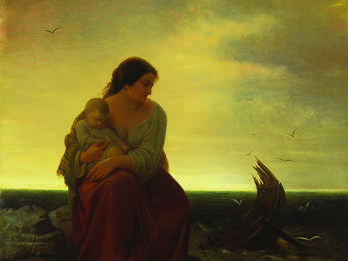
Fisherman’s Wife Mourning at the Shore
A woman holding an infant sits on a rock under a gloomy sky at twilight or dawn. In the background is the wreck of a boat. Julius Muhr painted other sentimental and romantic paintings like this one…

“L’aigle déplumé! . . .” (The Bald Eagle!)
This caricature of Napoleon III (1808–1873), the last monarch of France, was made after the defeat of France in the Franco-Prussian War (1870–1871), when Napoleon was being held in captivity in…
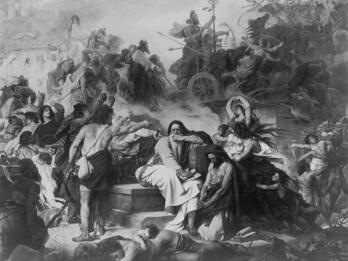
Jeremiah and the Fall of Jerusalem
Jeremiah at the Fall of Jerusalem, commissioned by the crown prince of Prussia, and first exhibited to great acclaim at the Berlin Academy of Art in 1872, depicts the fall of Jerusalem to Babylonia in…
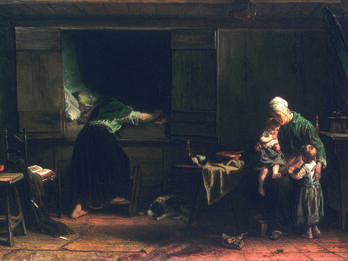
The Last Breath
The Last Breath is one of the genre paintings depicting the lives of fishermen and their families for which Jozef Israëls was best known. In this scene, a woman is weeping over the body of her husband…
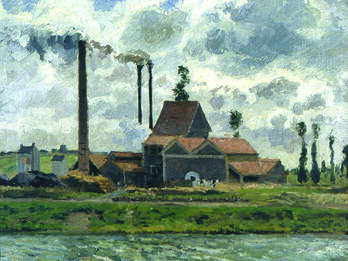
Factory near Pontoise
Camille Pissarro painted landscapes that, unusually for the time, included industrial elements, like this sugar-beet factory near Pissarro’s home in Pontoise. Like other impressionist paintings, this…
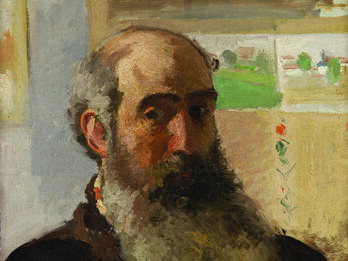
Self-Portrait
This is one of only four known self-portraits by Camille Pissarro. It was painted around the time that Pissarro and other rebellious artists broke from the traditional art establishment by forming…

